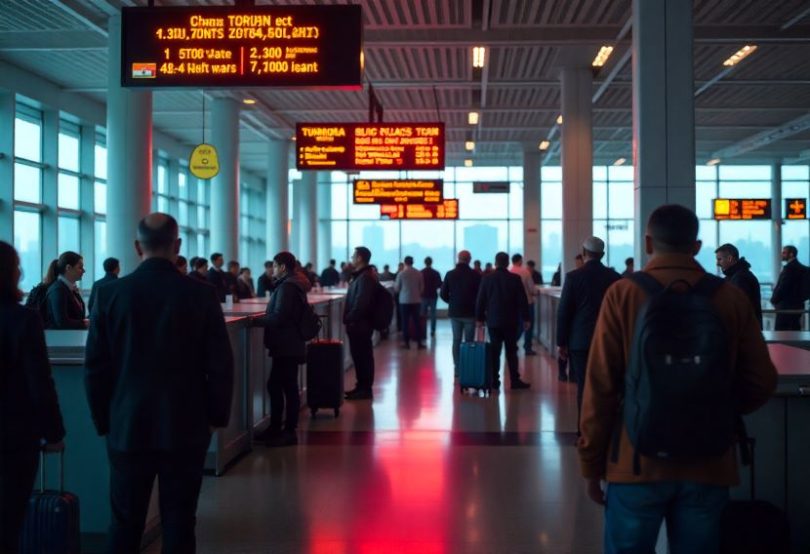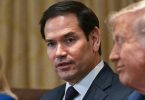Saturday, August 2, 2025
The announcement of updated tariff rates by former President Donald Trump on July 22, 2025, is expected to have significant ripple effects on global travel and tourism, as well as disrupt business travel. The newly imposed tariffs, affecting 67 countries, including the European Union and Taiwan, and ranging from 10% to 41%, are bound to raise costs for airlines, hotels, and businesses connected to the travel industry. While the tariff hikes are not directly targeting tourism, their consequences for the travel sector cannot be overlooked.
Trump’s decision to delay the tariffs’ start date from August 1 to August 7 has added to the uncertainty, giving trading partners more time to negotiate better terms. This delay may only extend the sense of unpredictability in the global economy, with potentially far-reaching effects on both individual travelers and businesses involved in tourism and international trade.
The Impact on Global Travel: Higher Costs and Uncertainty
One of the most immediate effects of the tariff increases is the increase in travel costs. As airlines face higher operational expenses due to the higher prices of imported aircraft parts and components, these costs are often passed on to consumers in the form of higher ticket prices. Similarly, the hospitality sector will feel the pressure of rising costs for imported goods and materials, leading to higher prices for accommodations, meals, and services.
For tourists, this means an increase in overall travel expenses, from flight tickets to hotel rooms. This financial burden could potentially discourage travelers, especially those seeking more affordable travel experiences. The compounded impact of increased prices for everyday goods, driven by inflation due to tariffs, further reduces disposable income that could otherwise have been spent on leisure travel.
Impact on International Tourism: Decreased Visits to the US
The tariffs, particularly the new 35% tariffs on Canada (up from 25%), add fuel to the fire of international tourism decline to the United States. As higher tariffs make travel more expensive, the US could see a decline in tourist visits, particularly from countries like Canada and Mexico, which are major trade and travel partners. Increased tension and perceived hostility in trade relations could also have a dampening effect on tourism sentiment, making the US a less attractive destination for travelers from affected countries.
Shifting travel patterns may also result from these tariff increases. With higher travel costs to the US, tourists may look elsewhere for more affordable, welcoming destinations. Popular European destinations or countries with favorable tariff policies may see an increase in inbound travelers, redistributing global travel patterns and potentially harming the US’s tourism industry.
Business Travel: Increased Costs and Less Flexibility
In the realm of business travel, the tariff hikes are expected to have a direct impact on corporate travel budgets. Increased costs for airlines and hospitality services mean that companies might reduce spending on international trips, opting instead for regional meetings or virtual conferences. In addition, the air cargo industry, which is heavily influenced by the cost of airline maintenance and aircraft components, may also face disruptions.
For international businesses, these tariffs can cause delays in shipments of necessary goods, affecting timelines and potentially increasing operational costs. The result could be a slowing of cross-border trade, particularly for industries reliant on timely deliveries and intercontinental travel.
Tourism Boycotts and Negative Sentiment
Tariffs, particularly those imposed on neighboring countries like Canada and Mexico, can spark retaliatory actions and potentially lead to tourism boycotts. Countries affected by the tariffs may view the US as a less welcoming destination, leading to a decline in international visitor numbers.
In some cases, negative sentiment stemming from these trade disputes could discourage travelers from visiting the US, particularly if they feel that political tensions are impacting their travel experience. A lack of cooperation in curbing illicit drug flows, as claimed in the tariff decision, can also undermine the positive tourism image the US has built over the years.
Quick Tips for Travelers Impacted by Tariffs
- Stay Updated on Tariff Changes: Travelers should keep an eye on updates regarding tariff policies, especially for destinations impacted by recent tariff increases.
- Consider Alternative Destinations: With US tourism likely to see a decline due to rising costs, travelers may want to consider alternatives, such as Europe, where many countries offer favorable visa policies and lower travel costs.
- Book Flights Early: As airlines adjust prices in response to tariffs, booking in advance may help secure better rates before price hikes hit.
- Opt for Regional Travel: If business travel is a priority, look into regional meetings or virtual options to reduce the need for long-distance international travel, which may be subject to higher costs.
- Be Prepared for Delays: Increases in travel and shipping costs may affect logistics for both business and leisure travelers, so plan ahead for potential delays or disruptions.
Conclusion: A Challenging Outlook for Travelers and Tourism
The ongoing tariff hikes imposed by Trump’s administration signal a period of increased economic uncertainty that will undoubtedly affect both business travelers and tourists. As the US and several of its trading partners navigate the impact of these new rates, the cost of international travel is expected to rise. With the US slipping in tourism appeal, countries affected by the tariffs may find their own travel industries struggling as well. Travelers will need to carefully consider the rising costs and shifting global dynamics when planning trips in the coming years, while businesses will have to adapt to these changes with flexibility and foresight.











